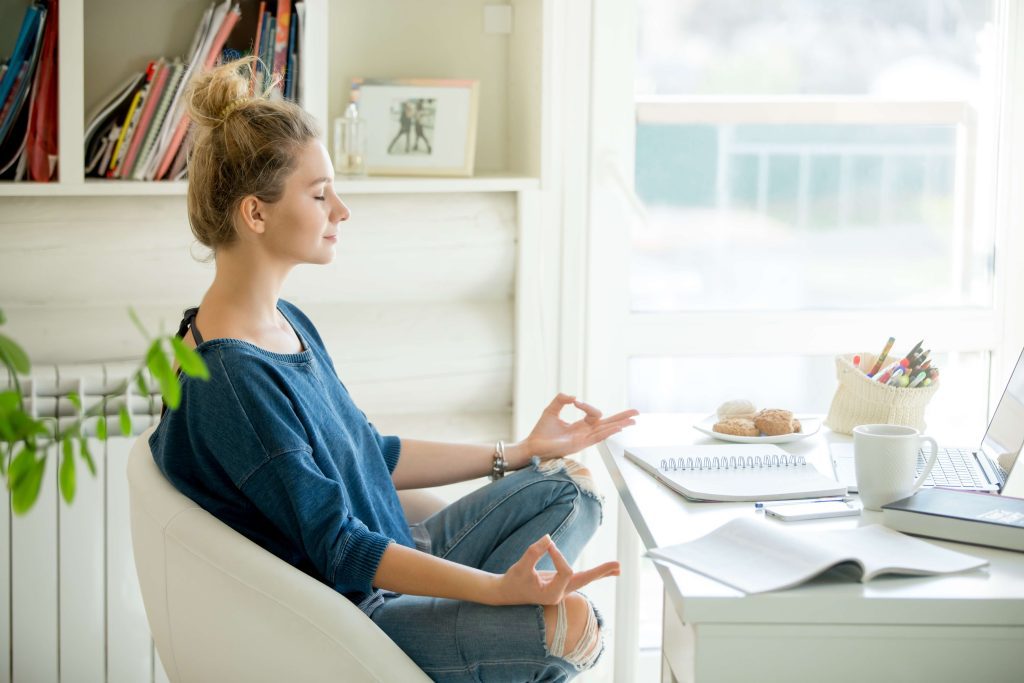Relaxation Techniques For Stress
We all face stressful situations throughout our lives, ranging from minor annoyances to more serious worries. No matter what caused the stress, it floods your body with hormones. Your heart pounds, your breath speeds up, and your muscles tense. Relaxation is a state of low tension in the mind and body. People frequently use specific procedures, called relaxation techniques, to become more relaxed and to cope with stress. Check out which relaxation technique is right for you!

Relaxation Techniques In Psychology
Relaxation techniques are psychological practices to help bring your body’s “relaxation response,” which is characterized by slower breathing, lower blood pressure, and a reduced heart rate. The relaxation response is the opposite of the “stress response”. Some of the studies confirmed that relaxation techniques might have similar results as cognitive behavioral therapy. In some types of therapy, relaxation techniques play a key role. Relaxation may help soothe the symptoms of a variety of mental health issues or may be assigned as “homework” by your therapist.
Relaxation Techniques For Stress
Relaxation techniques are activities, used to reduce stress and anxiety. These techniques can also be used to manage symptoms of panic disorder and help a person get through a panic attack. Relaxation techniques work to manage the fight-or-flight response, or stress reaction, that is frequently triggered among people with stress:
Breath
In this simple, powerful technique, you take long, slow, deep breaths (also known as abdominal or belly breathing). As you breathe, you gently disengage your mind from distracting thoughts and sensations. Breath focus can be especially helpful for people with eating disorders to help them focus on their bodies in a more positive way. However, this technique may not be appropriate for those with health problems that make breathing difficult, such as respiratory ailments or heart failure.
Muscle relaxation
This technique blends breath focus with progressive muscle relaxation. After a few minutes of deep breathing, you focus on one part of the body or group of muscles at a time and mentally release any physical tension you feel there. A body scan can help boost your awareness of the mind-body connection. If you have had a recent surgery that affects your body image or other difficulties with body image, this technique may be less helpful for you.
Massage can also be a powerful relaxation technique. The practice of massage often focuses on physically helping people reduce many types of muscle tension, including tension caused by stress or anxiety. While more research is needed to show that massage can affect long-term stress reduction, at least one study has shown that cortisol levels are lower after a massage session.
Visualizing
For this technique, you conjure up soothing scenes, places, or experiences in your mind to help you relax and focus. You can find free apps and online recordings of calming scenes—just make sure to choose imagery you find soothing and that has personal significance. Guided imagery may help you reinforce a positive vision of yourself, but it can be difficult for those who have intrusive thoughts or find it hard to conjure up mental images.
Yoga, tai chi & qigong
These three ancient arts combine rhythmic breathing with a series of postures or flowing movements. The physical aspects of these practices offer a mental focus that can help distract you from racing thoughts. They can also enhance your flexibility and balance. But if you are not normally active, have health problems, or have a painful or disabling condition, these relaxation techniques might be too challenging. Check with your doctor before starting them.
Meditation
Meditation has been practiced around the world for thousands of years. It is a technique used to quiet the mind and body, and release stress. It can also bring focus and clarity, and often, after meditating, problems that you have been struggling with, miraculously become solved. Meditation has also been known to inspire people to write, and to spur lucrative business ideas, as your subconscious comes to light.
One simple form of meditation requires you to sit in a quiet room, either on a pillow, cross-legged on the floor, or in a comfortable chair, making sure your spine is straight. It is advised that you use the same place every day. It is also suggested that you personalize your spot, by beautifying it with candles, flowers, and pictures of the people that you love.
The idea is to sit quietly, with your eyes closed, and focus on a point inside of your forehead. Try not to think of anything in particular, but don’t try ‘not’ to think either, allowing your mind to become calm, and peaceful. If you find that your mind is ‘chattering’, don’t try to control it, just let it finish what it is that it is working on, it will eventually quiet down. It is also recommended for beginners to begin with ten to twenty-minute sessions, each day. After a while of doing this, you will start to feel deep relaxation and joy during these sessions.
The first step to this self-hypnosis is to sit in a quiet, comfortable spot, making sure you are facing a wall about eight feet away from you. Pick a spot or object on that wall and make that spot or object your focal point. Looking at your focal point, begin counting backward from 100, one number for each breath you exhale. As you do this, imagine yourself floating, and feeling very relaxed. You will begin to feel your eyelids getting heavy and may begin to blink. Let your eyes slowly close, and as you continue to count backward, imagine yourself as limp as a ragdoll, totally relaxed, and floating in a safe and comfortable place. Stop counting, and just float in your space. If any disturbing thoughts should come while in your space, just let them flow out again, and allow yourself to continue to feel safe and relaxed. This technique can help you to cope with stress and discharge the tension that accumulates during stressful situations.
When you are ready to come out of this self-hypnosis, you can either let yourself drift off to sleep, or you can count from one to three and exit. First, count one, and get yourself ready to exit. At two, take a deep breath, and hold for a few seconds. At three, exhale and open your eyes slowly. As you open your eyes, continue to hold on to that relaxed and comfortable feeling.
You may then want to increase the length of your sessions to thirty minutes, or maybe even an hour. In our highly active lifestyles of today, it is imperative that we include a brief time for meditation in our daily schedule. For more self-help techniques and tips, please visit my website.

How To Get The Most From Relaxation Techniques?
When faced with many responsibilities and tasks or the demands of an illness, relaxation techniques may not be a priority in your life. But that means you might miss out on the health benefits of relaxation. To get the most benefit, use relaxation techniques along with other positive coping methods:
- Thinking positively
- Problem-solving
- Managing time and priorities
- Exercising regularly
- Eating healthy
- Getting enough sleep
- Spending time outdoor
- Socializing with family and friends, who share the same values


At Overland IOP, we offer services to treat primarily mental health and simultaneously work on the client’s co-occurring disorders until the signs and symptoms of substance dependence are in remission. At Overland IOP we provide such services as individual therapy, group therapy, telehealth, case monitoring, solution-focused brief therapy, behavioral therapies, acceptance& commitment therapy, medication management & psychodynamic therapy.
Published: September 29, 2022
Last Updated: December 20, 2022

Published: May 23, 2025
Intensive Outpatient Program Duration
Intensive Outpatient Programs (IOPs) bridge the gap between full-time residential care and traditional outpatient services. Designed for individuals who require more structured support than weekly therapy but do not need 24-hour supervision, IOPs offer flexibility—letting clients continue to work, attend school, or care for family while engaging in an intensive treatment schedule. Overland IOP in […]
Read more
Published: May 02, 2025
What Is Mental Health? Definition, US & California Statistics
Mental health is a fundamental aspect of overall well-being, shaping how we think, feel, and interact with the world around us. It influences every decision we make, how we handle stress, and the way we build relationships. In today’s fast-paced society, where anxiety, depression, and burnout are increasingly common, understanding mental health has never been […]
Read more
Published: April 17, 2025
Workforce Challenges in Behavioral Health: US & California Perspective
The United States is grappling with a significant behavioral health crisis, marked by a rising demand for mental health and substance use services. Central to this issue is a critical shortage of behavioral health professionals, a problem that is particularly pronounced in California. As of December 2023, more than half of the U.S. population—approximately 169 […]
Read more
